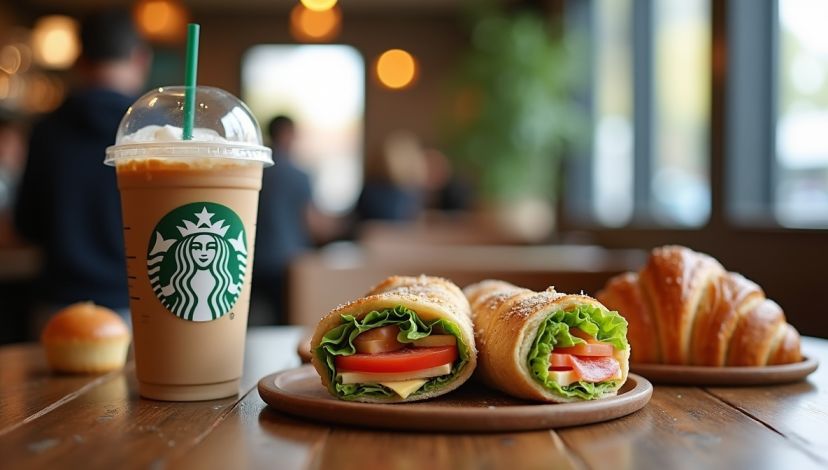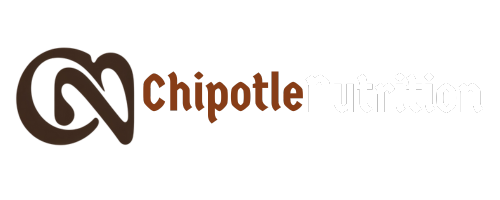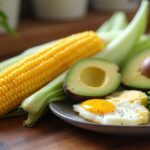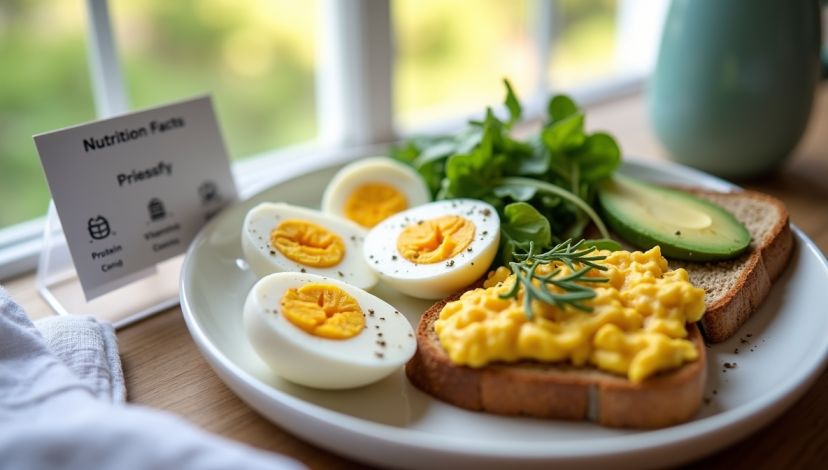Starbucks Nutrition: Smart Tips to Enjoy Your Favorite Drinks

Starbucks is a global leading destination when it comes to buy a coffee and some snacks on the way. However, there is something more than the nice taste and the comfortable aura; lots of customers are interested in what exactly is in their food and beverages. Understanding Starbucks nutrition has become essential for those who want to enjoy their favorite beverages while managing calories, sugar intake, or dietary restrictions.
Table of Contents
- Understanding Starbucks Nutrition Basics: What’s in Your Cup?
- Key Nutritional Focus Points
- Expert Insight
- Real-Life Example
- Popular Starbucks Drinks Fat and Sugar: The Table of Calories, Sugar & Fat (Table Included)
- Boost your Starbucks Order bespoke to a NutritionBoost: Doable Ideas and Example
- Some of the Options for Customization:
- The Future of Starbucks Nutrition: Trends in Healthier Menus (Table and Expert Commentary)
- Trends at Starbucks with respect to Nutrition
- Nutritional Benefits of Cow, Almond, Soy, Coconut, and Oat Milk Latte per 12 oz
- Conclusion
- FAQs
Are you keeping a close eye on your sugar intake or working with a calorie-restricted diet? Or are you interested in allergens? When you get to know the nutritional information, you can make decisions on what to eat and drink. Starbucks sells a variety of drinks (from brewed to creamy lattes to sweet frappuccinos) on top of snacks and meals. All of the options are quite different in terms of calories, carbs, protein, fat, and the sugar levels.
In this article, we are going to dissect the nutritional environment of the Starbucks products, expert-wise, and compared them with each other to help you make healthier choices based on the same without compromising taste. It is possible to carry on with your coffee habit without hurting yourself when you know what is in your cup.
Key Takeaways:
- The calorie, sugar levels, and fat contents of Starbucks drinks and foods also differ greatl,y and hence understanding your choices can be beneficial to control your nutrition plans.
- With drinks, specific calorie levels as well as additional sugar additions can be decreased by customising with milk choice, as well as varying levels of syrup.
- Starbucks has clear allergen and nutritional counts, helping all people make healthier choices.
Understanding Starbucks Nutrition Basics: What’s in Your Cup?
The majority of Starbucks beverages are prepared using espresso or brewed coffee and mixed with milk, sweetener, and flavour. However, there are a lot of factors influencing the nutritive affect, such as drink size, type of milk, syrups, etc.
Key Nutritional Focus Points
- Calories: Basic breakfast coffee or espresso shots have less than 10 calories, and specialty drinks or large sweetened frappuccinos have more than 600 calories.
- Sugar: The amount of added sugar may be more than you might expect since most people use more sugar than the limits advisable in a day-an average grande flavored latte may have 25+ grams of sugar.
- Fat: Whole milk and cream contain saturated fat, and substitutes made of plants, such as almond or soy milk, can decrease the amount of fat.
- Caffeine: Depends on the size of the drink and processing, but most of the time, the common drink will have approximately 150 mg of caffeine in a grande (16-ounce) of the beverage that has undergone the brew process.
Expert Insight
Dietitians are known to emphasize on the fact that most of Starbucks beverages contain snuck calories and sugars, particularly when flavored syrups or whip creams are included. Dr. According to Emily Brown, a registered dietitian:
Customer empowerment. Households can also adjust their orders, knowing the nutrition facts. Switching to non-fat milk, using less pumps of syrup, or drinking black coffee are wonderful options to have at Starbucks in order to stick to the health objectives.”
Real-Life Example
Take, for example, the trendy Caramel Macchiato grande (16 oz): It has got about
- 190 calories
- 25 Grams of sugar
- 7 grammes of fat
Drinking non-fat milk and taking half the syrup pumps can literally reduce the amount of calories and sugar by nearly half, and not sacrifice much as far as ideal flavor is concerned.
NB: the nutrition information is always subject to changes, so please use the most up-to-date food data in the Starbucks official web portal or the guides in the stores.
Popular Starbucks Drinks Fat and Sugar: The Table of Calories, Sugar & Fat (Table Included)
To drive home, decisionable decisions, the following is a comparison of the traditional Starbucks beverages at their medium (grande) serving, including calories, sugar (grams), and fat (grams):
| Drink Name | Calories | Sugar (g) | Fat (g) | Description |
| Brewed Coffee | 5 | 0 | 0 | Plain black coffee with no additives |
| Caffè Latte (Whole Milk) | 190 | 18 | 7 | Espresso with steamed whole milk |
| Cappuccino (2% Milk) | 120 | 10 | 4 | Espresso with steamed 2% milk foam |
| Caramel Macchiato | 190 | 25 | 7 | Espresso with vanilla syrup, milk, caramel |
| Mocha Frappuccino | 370 | 49 | 15 | A coffee blended drink with chocolate syrup |
Caption of the table: The nutritional comparison of the most popular drinks at Starbucks (grande). This aids you in having the ability to view the calorie and sugar differences in order to make a selection.
This information demonstrates that sugar and calorie levels may vary considerably depending on the type of drink. Drinks containing syrups or such toppings as whipped cream are very likely to contain more nutrients.
Boost your Starbucks Order bespoke to a NutritionBoost: Doable Ideas and Example
Starbucks has one of the most amazing choices of personalizing your drinks. This personalization plays an important role in regulating the diet.
Some of the Options for Customization:
- The types of milk are important aspects as whole, 2%, skim, soy, almond, oat, or coconut milk all change calories and fat significantly.
- Cutting added sugar usage by either reducing or skipping syrups.
- Refraining from toppings or whipped cream that is rich in fat.
- Ordering smaller portions or choosing the smaller cups or a so-called short order to decrease the amount of calories consumed.
- Using no sugar syrups or fewer pumps.
Real E-Cas Week Problem: A Particular person, Grace
Starbucks Cafes Sarah is a career lady who adores Starbucks bars, but needed to minimize the sugar content in her daily diet. When she was working with a nutrition coach, she was taught to ask to order a tall (12 oz) latte and almond milk with just one pump of a vanilla syrup as compared to the three pumps that she used to get. This switch reduced her calories and sugar content of 100 calories and 20 grams of sugar per drink, so she will be much healthier with her daily habit.
Starbucks nutrition transparency was key for Sarah’s success; having access to exact nutritional information helped her make better choices without giving up her favorite treats.
Disclosure: Healthful attention to customization of your Starbucks menu can metamorphically alter the nutritious quality of your beverages.
To read more about healthy choices in beverages, check our corresponding guide about the Cabbage Soup Diet: Lose Weight Fast with This Easy 7-Day Plan
The Future of Starbucks Nutrition: Trends in Healthier Menus (Table and Expert Commentary)
Starbucks has been constantly changing in response to consumer demands of healthier and more transparent food. The desire to be healthy makes customers urge the brand to come up with more plant-based options and offer lower-sugar products.
Trends at Starbucks with respect to Nutrition
- Increasing plant-based milk substitutes, such as oat and almond milk.
- Reduction of sugar programs and availability of non-sugar syrups.
- Diet snacking and high-protein products.
- Clear allergen labeling and online nutrition guide for greater transparency.
Nutritional Benefits of Cow, Almond, Soy, Coconut, and Oat Milk Latte per 12 oz
| Milk Type | Calories | Fat (g) | Sugar (g) | Notes |
| Whole Milk | 150 | 8 | 12 | Traditional, creamy |
| 2% Milk | 120 | 5 | 12 | Balanced fat |
| Skim Milk | 80 | 0 | 12 | Lower fat, same sugar |
| Soy Milk | 100 | 4 | 7 | Plant-based, some sugars reduced |
| Almond Milk | 60 | 2 | 7 | Lower calories, nutty flavor |
| Oat Milk | 120 | 5 | 15 | Increasingly popular, more sugars |
Table caption: Comparison of nutrition (and the impact it has on the number of calories in a drink) of the popular milk options in Starbucks.
According to health expert Dr. Lisa Harper, it is important to note:
According to the examples in Starbucks, the company has embraced a variety of milk options that support varying diets and the demands. Consumers ought to use these options towards a differentiated and healthier coffee enjoyment.”
Starbucks nutrition updates reflect this evolving landscape, offering more choices that fit wellness goals without compromising taste.
Conclusion
Understanding Starbucks nutrition is vital for anyone wanting to enjoy their favorite drinks responsibly. This high-nutrition variety of Starbucks beverages and snacks implies that not every product suits every life or dietary intention.
With some self-education in the field of nutritional information, customisable options, and news about the brand cutting the fat out of their offerings, you will feel free to enjoy what you love without feeling guilty. Be it a focus on weight control, on blood sugar balance, whatever you may wish to achieve with the help of a well-balanced diet, knowledge is your best fit.
These are the main lessons that you should remember:
- Different drinks contain very different nutritional values and vary according to the size of the drinks.
- Health impact is highly influenced by Customization (choice of milk, adjustment of syrup, etc).
- Starbucks nutrition transparency allows for smarter, healthier ordering.
Are you ready to ensure that Starbucks becomes healthier? Begin with referring to their official guide of nutrients and play around with your tastes. Your taste buds and body will be glad.
FAQs
Q1: What is the calorie count of a normal Starbucks latte?
A: A whole milk grande Starbucks latte contains approximately 190 calories, though this differs according to the type of milk and syrups.
Q2: Does Starbucks serve drinks with a low sugar level?
A: Yes, you can personalize the drinks using less sy Himapsogan pumps or sugar-free syrups to lessen sugar content.
Q3: Does Starbucks have dairy-free milk?
A: The dairy-free milk products provided by Starbucks include soy milk, almond milk, oat milk, and coconut milk.
Q4: Where can I find Starbucks nutrition information?
A: Starbucks has clear information on nutrition and allergen guides of all foods and beverages at the official site and in stores.
Q5: Is it possible to lower the number of calories in my drink at Starbucks?
A: Yes, to reduce calories, one can select non-fat or plant milk and ask to decrease the number of syrup pumps.
Latest Posts
You Might Also Like

Chipotle Nutrition – Your go-to guide for calories, healthy choices, and balanced meals at Chipotle.
TOP NEWS
© Copyright 2025 Chipotle Nutrition. All rights reserved














No Comments